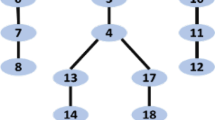Abstract
In the field of human action recognition, some existing works are mainly focused on macro actions, e.g., the requirements for action recognition is walking or jumping, while others are concentrated on micro actions, e.g., hand waving or leg raising. However, existing works rarely consider the recognition effect of different sensor wearing schemes with various requirements. In this work, the influences of the wearing scheme on action recognition effect are taken into account, a universal action recognition method to adapt different recognition requirements is developed. First, we present an action layered verification model which includes static action layer, dynamic action layer and joint presentation layer, which is used to provide an optional wearing scheme for each layer and to prevent wrong classification problems. Second, we verify the recognition effect of various wearing schemes under different layers. Finally, an action recognition method based on decision tree is introduced to adapt different requirements. The experiments show that the proposed method achieves a desirable recognition effect in comparison to existing ones.
Access this chapter
Tax calculation will be finalised at checkout
Purchases are for personal use only
Similar content being viewed by others
References
Moayedi, F., Azimifar, Z.S., Boostani, R.: Structured sparse representation for human action recognition. Neurocomputing 161(C), 38–46 (2015)
Sazonov, E.S., Fulk, G., Hill, J., Browning, R.: Monitoring of posture allocations and activities by a shoe-based wearable sensor. IEEE Trans. Biomed. Eng. 58(4), 983–990 (2011)
Kwapisz, J.R., Weiss, G.M., Moore, S.A.: Activity recognition using cell phone accelerometers. Acm Sigkdd Explor. Newsl. 12(2), 74–82 (2016)
Liu, Y., Nie, L., Liu, L., Rosenblum, D.S.: From action to activity: sensor-based activity recognition. Neurocomputing 181, 108–115 (2016)
Zhang, M., Sawchuk, A.A.: Human daily activity recognition with sparse representation using wearable sensors. IEEE J Biomed Health Inform 17(3), 553–560 (2013)
Ullah, A., Ahmad, J., Muhammad, K.: Action recognition in video sequences using deep bi-directional LSTM with CNN features. IEEE Access PP(99), 1 (2017)
Panagiotakis, C., Papoutsakis, K., Argyros, A.: A graph-based approach for detecting common actions in motion capture data and videos. Pattern Recogn. 79, 1–11 (2018)
Alfaro, A., Mery, D., Soto, A.: Action recognition in video using sparse coding and relative features, pp. 2688–2697 (2016)
Rautaray, S.S., Agrawal, A.: Vision based hand gesture recognition for human computer interaction: a survey. Artif. Intell. Rev. 43(1), 1–54 (2015)
Saner, H.: Wearable sensors for assisted living in elderly people. Front. ICT 5, 1 (2018)
Bao, Y., Sun, F., Hua, X.: Operation action recognition using wearable devices with inertial sensors. In: IEEE International Conference on Multisensor Fusion and Integration for Intelligent Systems. IEEE (2017)
Karungaru, S.: Human action recognition using wearable sensors and neural networks. In: Control Conference, pp. 1–4. IEEE (2015)
Zhang, T., Wang, J., Xu, L.: Fall detection by wearable sensor and one-class SVM algorithm. In: Huang, D.S., Li, K., Irwin, G.W. (eds.) Intelligent Computing in Signal Processing and Pattern Recognition. LNCIS, vol. 345, pp. 858–863. Springer, Berlin (2016). https://doi.org/10.1007/978-3-540-37258-5_104
Thomas, O., Sunehag, P., Dror, G.: Wearable sensor activity analysis using semi-Markov models with a grammar. Pervasive Mob. Comput. 6(3), 342–350 (2010)
Gjoreski, H., Lustrek, M., Gams, M.: Accelerometer placement for posture recognition and fall detection. In: Seventh International Conference on Intelligent Environments, pp. 47–54. IEEE Computer Society (2011)
Mannini, A., Sabatini, A.M., Intille, S.S.: Accelerometry-based recognition of the placement sites of a wearable sensor. Pervasive Mob. Comput. 21, 62–74 (2015)
Stelios, M.A., Nick, A.D., Effie, M.T., Dimitris, K.M., Thomopoulos, S.C.A.: An indoor localization platform for ambient assisted living using UWB. In: International Conference on Advances in Mobile Computing and Multimedia, pp. 178–182 (2008)
Acknowledgement
This work is supported by the Natural Science Foundation of China (No. 61502118), the Natural Science Foundation of Heilongjiang Province in China (No. F2016009), the Fundamental Research Fund for the Central Universities in China (No. HEUCF180602 and HEUCFM180604) and the National Science and Technology Major Project (No. 2016ZX03001023-005).
Author information
Authors and Affiliations
Corresponding author
Editor information
Editors and Affiliations
Rights and permissions
Copyright information
© 2019 ICST Institute for Computer Sciences, Social Informatics and Telecommunications Engineering
About this paper
Cite this paper
Ma, F. et al. (2019). An Action Recognition Method Based on Wearable Sensors. In: Zheng, J., Xiang, W., Lorenz, P., Mao, S., Yan, F. (eds) Ad Hoc Networks. ADHOCNETS 2018. Lecture Notes of the Institute for Computer Sciences, Social Informatics and Telecommunications Engineering, vol 258. Springer, Cham. https://doi.org/10.1007/978-3-030-05888-3_19
Download citation
DOI: https://doi.org/10.1007/978-3-030-05888-3_19
Published:
Publisher Name: Springer, Cham
Print ISBN: 978-3-030-05887-6
Online ISBN: 978-3-030-05888-3
eBook Packages: Computer ScienceComputer Science (R0)




